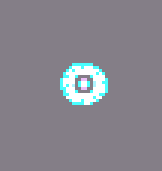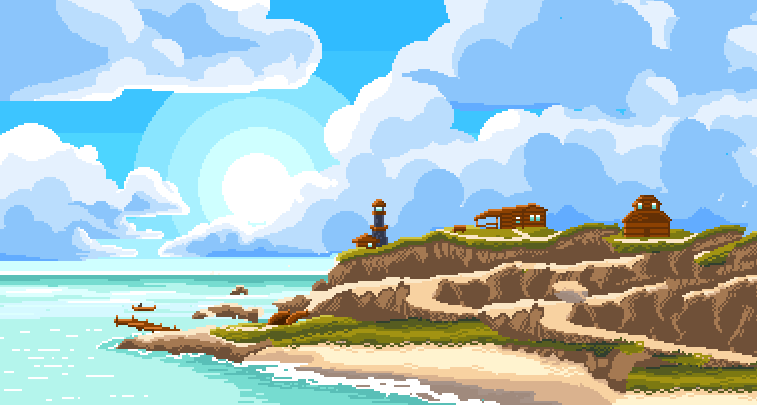Hello everyone, we’ve made some huge leaps in progress over the past year and are so excited to finally share a first look at gameplay. This is Super Plexis completely rebuilt from the ground up, running in a new engine, on our own game servers, and with a completely refreshed visual style. We’ll cover the major details of all those things in this blog, but for the real deep dive and demonstrations we definitely recommend watching the replay of our live streamed event below (once it’s live!):
https://www.twitch.tv/videos/698517791
YouTube:
In making this first build we have been laser focused on the core gameplay mechanics, making something that will feel familiar to fans of the genre but also even more responsive in many ways. If you’ve played our iOS version you may be notice a few things are missing, like characters, abilities, or even vertical swapping. Don’t worry! We plan to implement all of those in future betas, but this time around our goal is to nail down the fundamentals first. We can’t wait to let everyone play it for themselves, and we’ll have more info on when you can expect a public build soon. Let’s dive into the new stuff!
Multiplayer Game Modes
2v2 with player boards colored by team.
4-player game modes will be featured in the upcoming PC beta! 2v2 team matches and free-for-all battles will be live from the start with their own matchmaking pools (with 1v1s too, of course). Due to screen space limitations on phones, this wasn't something we originally planned to support, but with the extra screen real estate on PC and consoles it felt like a natural fit. We were inspired to make these modes even more interesting by introducing Player Targets, a new feature that introduces a whole new level of strategy to 4-player game modes:
The all-new attack queue, player targets, and pressure gauge in action.
Player Target Mechanics:
Each player has control of a target, marked by their player number, that sits above their opponent's board.
All player targets are visible to all players, so all players know who is targeting who.
Incoming attacks populate inside the target, stacking vertically.
A player cannot change targets during an attack, but they can queue their next target position once the current attack finishes.
Another new mechanic — not exclusive to multiplayer modes — is something we’re calling the Pressure Gauge. This is a visual representation of your board's danger level, split into 3 stages: green, yellow, and red. If garbage or blocks reach the top of your board, the pressure gauge will start increasing. When it fills completely, you take damage (for knockout modes you lose instantly). In this sense it acts like a visual countdown timer, but it has another function too: While all boards start at the green level by default, that pressure floor can change based on how much garbage is currently on top of your board. This effectively shortens the count-down timer based on the level of the gauge, the specific times are listed below.
Pressure Gauge Levels:
Green: 3 second countdown
Yellow: 2.25 second countdown
Red: 1.5 second countdown
Deep Red: 0.75 second countdown
We’re excited to test these new mechanics with the community and get feedback! At a competitive level, puzzle games in this genre are known to have matches that can stagnate or go on for too long, especially between two highly skilled players. We encountered this in the iOS version of Super Plexis as well, so we’re hoping that features like the pressure gauge (and other unannounced variables) will increase the stakes, making high-level matches more intense, while also making the game rules easier to read visually.
That covers the core gameplay, now let’s open the hood and explore what’s making all this cross-platform networked multiplayer possible!
Netcode
Super Plexis is such a fast-paced game with direct player-to-player interaction that we could never justify the player "feeling" the lag. Here are a few pillars we sought to master with the game's netcode architecture, and have achieved doing so:
Responsiveness: All of the player's inputs trigger an instantaneous response
Performance: The game's runtime performance is not affected by the player's connection strength
Consistency: All network clients are guaranteed to arrive to the same game state
Masterful execution of these three pillars, or any reliable netcode for that matter, is no small feat - and we understand that even AAA games have immense difficulty delivering reliable netcode. We can say with certainty, Super Plexis has reliable netcode, and we're very proud of it.
We took notes from the fighting game community and learned about Rollback Netcode, which delivers on our core netcode pillars (and more). Of course, this is after months of trial and error with other netcode models.
In a nutshell, Super Plexis Netcode is a custom Client Rollback netcode architecture with Input Relay servers at the center of every game network. By employing a custom relay service, we are able to guarantee cross-play and prevent cheating. Additionally, the entire architecture is purely input driven, which makes the whole service very scalable - very important for a small indie team of 4 people.
We commonly run playtests with >250 ping, and have even played games with >350 ping, blissfully unaware of the lag. In a networked game, regardless of your connection strength, your inputs are responsive, animations are smooth, and pops/artifacts are extremely rare, even in the worst conditions. This is showcased live in our gameplay reveal stream, linked at the top of the post.
The Engine
After many iterations, we've landed on Godot as our core game engine. For gameplay, we have our own abstraction layer on top of Godot which allows us to create gameplay features that mesh seamlessly with our custom netcode architecture.
Godot has been so useful to our team. We are able to implement user interfaces, sound effects, animation, and visual effects at a way larger scale, with less work, compared to our time working on the original iOS version. Thanks to Godot, we can easily deploy the game for iOS, Android, PC, Mac, and Linux.
By choosing to invest into Godot as Super Plexis's core game engine, we have accelerated development to a pace that we've never seen before. However, we also had to halt production deployments to re-engineer the game from the ground-up. As seen in the stream video linked above, this has been completely worth it, and we are so excited to deliver this new revamped version of Super Plexis on all major platforms. We cannot share an accurate release date at this time, but we can share major gameplay updates at a way higher flux than previously.
Art Updates
In addition to all these technical overhauls, you may notice the game looks a bit different now too! We announced awhile back that we’d be adjusting the overall resolution scale and redrawing assets to double-down on our “SNES” retro aesthetic. This was our goal even back in the iOS version, and while everything was “technically” pixel art, our scale factor was relatively low compared to the super dense pixels of the retina displays we were rendering on. The result was art that looked really clean and sharp, but was only distinctly noticeable as pixel art in places where we applied additional scaling, like in the character select screen (with sprites rendered at 2x in the preview), and in the adventure mode maps. We’re on a path now that will make the game more visually consistent in all areas, in addition to making asset creation more efficient.
Below are just a few examples of in-game animations that have been redrawn. You can see how the simulated “pixel size” is bigger in the updated versions:
36x36 Block Bounce (iOS Version)
20x20 Block Bounce (PC Beta)
160x160 Block Pop (iOS Version)
50x50 Block Pop (PC Beta)
Check out the stream footage to see these and other differences in-action! As with other areas of the game, the visuals and animations may be subject to change based on play testing and user feedback.
Re-Introducing the World of Len
It’s been a long time since we’ve shared any info in the way of “Super Plexis Lore” but rest assured characters and single-player content are still in the works! We won’t put an estimate on when to expect characters yet, since their implementation will come alongside the development and re-balancing of abilities for multiplayer, but in the meantime we can at least share a taste of the world they inhabit
Artist note: the visuals here are a combination of new, old, and in some cases unfinished backgrounds, consider everything as concept art that could potentially change!
Loftwood
A town tucked away in a lush forest biome that our main character duo, Aria & Cleff, calls home. Loftwood exists far away from modern society and has a naturally preserved traditional culture.
Azure
In contrast, Azure is the star metropolis of Len and a hub for state-of-the-art Lumina technology. A previously shown character, Vulmir, is heavily involved in commerce here (and other shady dealings).
Starport
Starport is a small sea-side town featuring one of the busiest ports in Len. Famous for it’s seafood and raucous environment, it is a place closely associated with Macktooth.
Polymoor
A trencherous, poisonous swamp located not far outside Len’s biggest city, Polymoor is a place best avoided. Covered toxic plants and other bioluminescent life, it is a place with a special connection to an unannounced character.
Redtop
Another region with connections to a character we have yet to announce, Redtop gets its name from the clay present in the region. The canyons are at such high elevation it is common to see their tops covered in snow.
That’s everything for now!
Thanks for checking in for our updates and we can’t wait to show more as development progresses. We hope everyone enjoyed getting an early look at the upcoming beta gameplay and art! We’ll have more updates on when to expect the beta, and everything we plan to include it, in the near future. Don’t forgot to check out the livestream if you want even more info! And as always join us on discord to share feedback and get early updates on new stuff on the way!
— The Medley Studios Team














